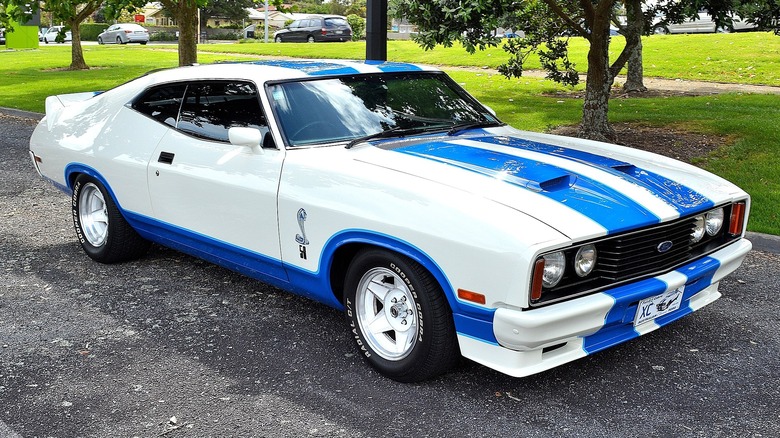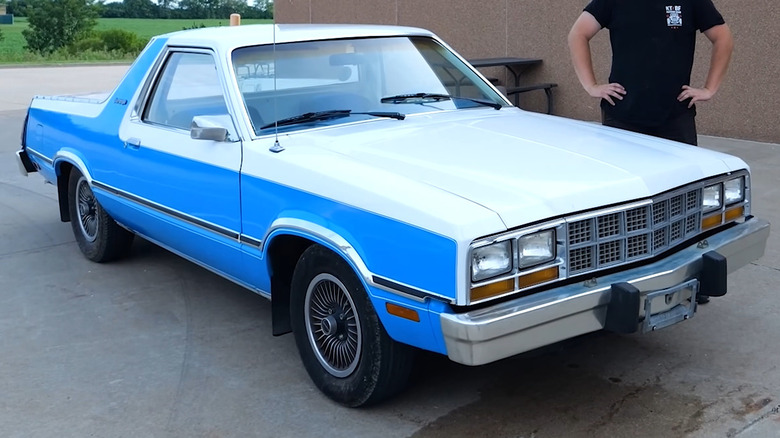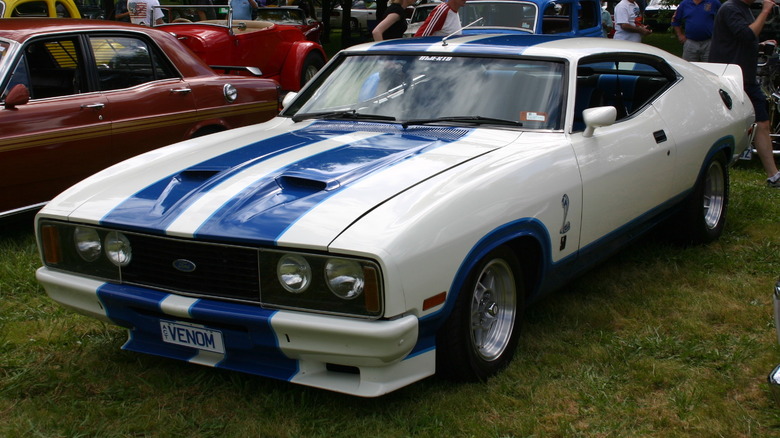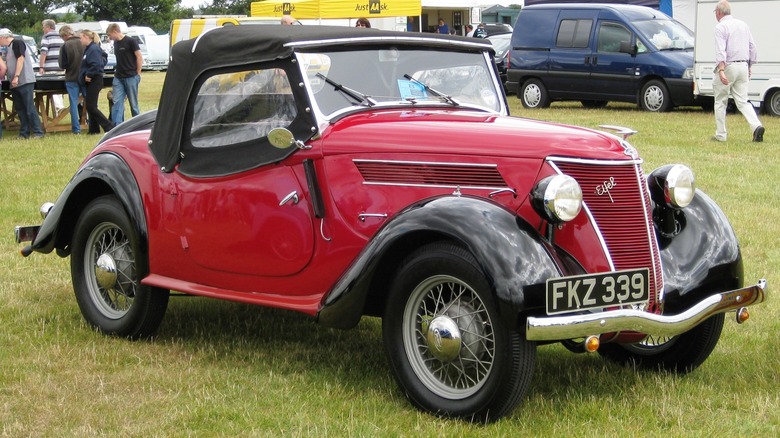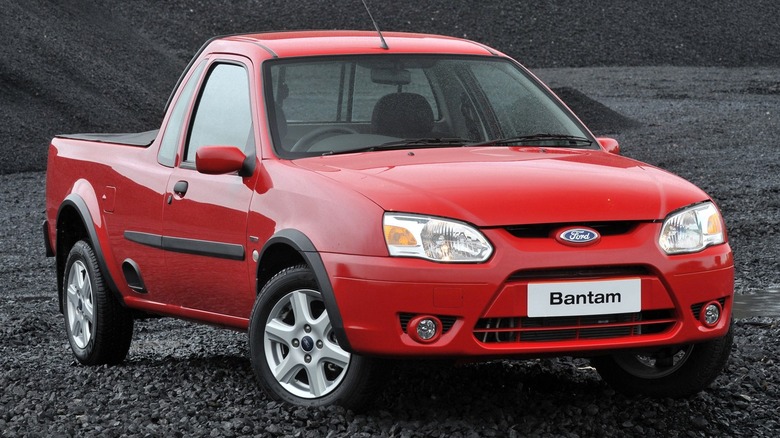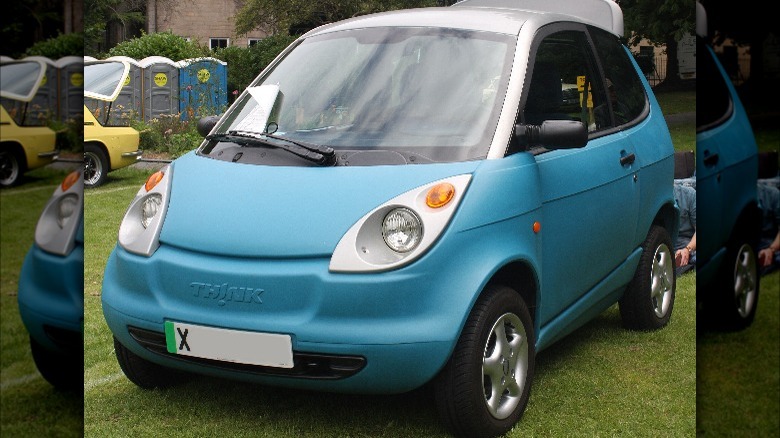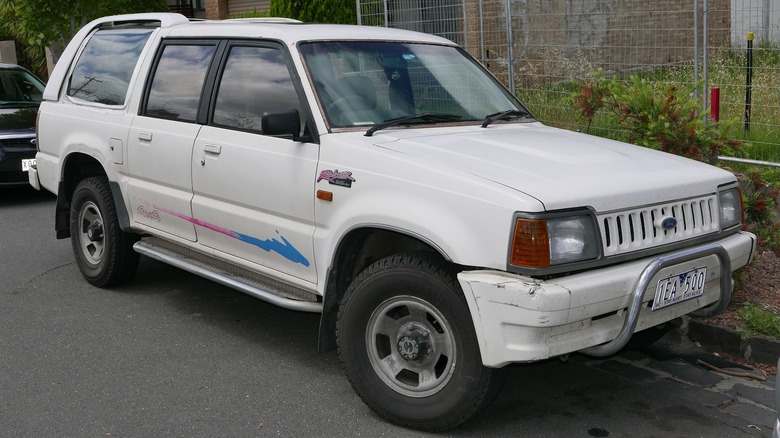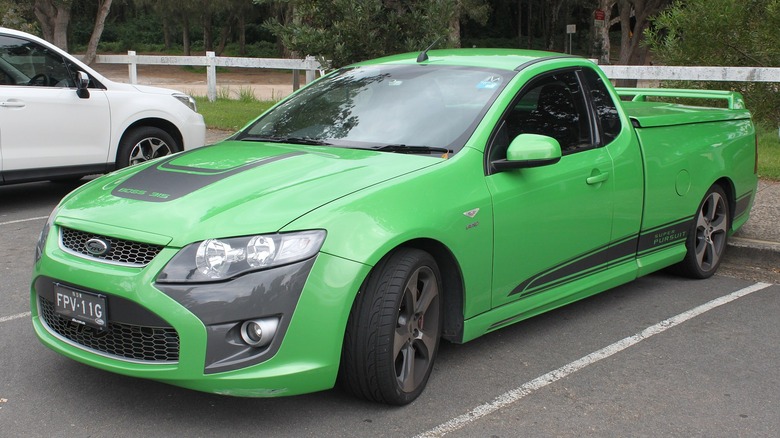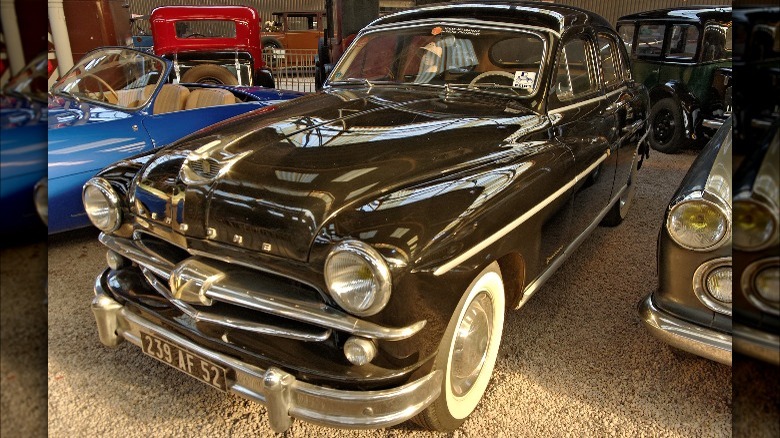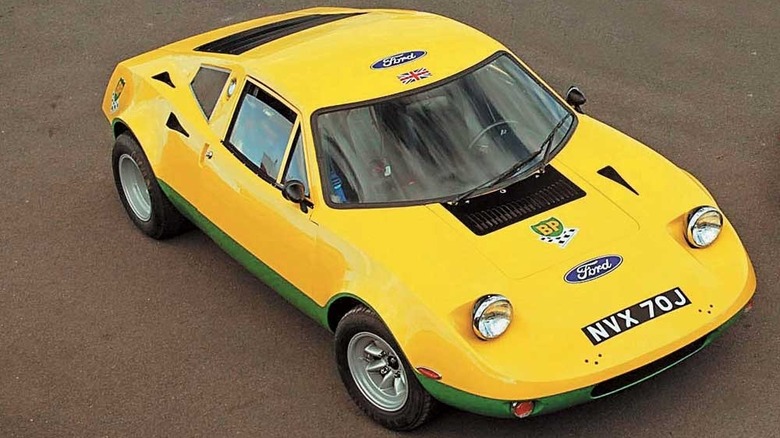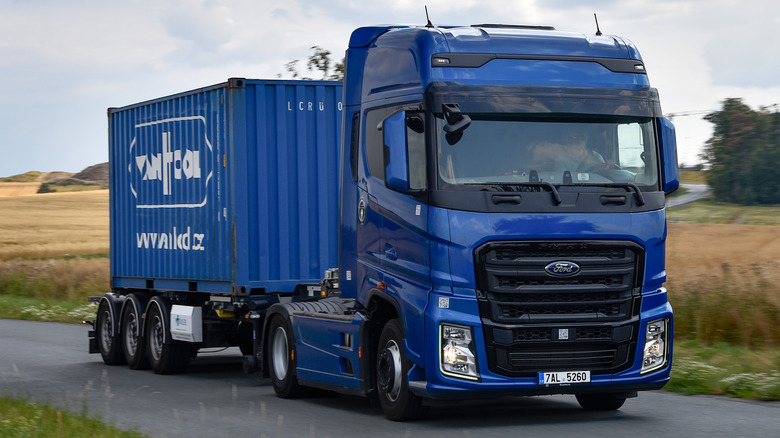10 Ford Models You Didn't Realize Existed
Henry Ford revolutionized car manufacturing, and his company's back catalog boasts a wealth of famous nameplates that have become ingrained in pop culture. Yet, for every Mustang, F-Series, or Model T, there are a number of lesser-known Ford variants that have been forgotten about by most enthusiasts. Then, there are those that those same enthusiasts might never have heard of in the first place.
Some of these undiscovered models were only minimally promoted at their launch, then quickly removed from Ford's lineup after they underperformed their sales expectations. Others were local favorites in one of Ford's many overseas markets, but never made it over to America. Some never made it into dealerships at all, despite the best efforts of the company's designers and engineers.
These models are all among the least known to American enthusiasts, and cover a wide range of segments from tire-shredding muscle cars to upscale luxury cruisers.
[Featured image by GPS 56 via Wikimedia Commons | Cropped and scaled | CC BY 2.0]
Ford Durango
A short-lived followup to the Ranchero, the Ford Durango was built by National Coach Products in collaboration with Ford. It was a last-minute model that was designed to compete against the popular Chevrolet El Camino, but low levels of interest from buyers saw it shelved after just two years in production. Most examples were built in 1981, with a few built in 1982. Reports vary regarding exact production numbers — some estimate a little over 200 were built, and some claim the real number was even less.
The pickup was a conversion of the Ford Fairmont Futura, but it had to undergo costly conversion works before it could be delivered to customers. As a result, it was more expensive than the rival El Camino. Ford's initial plan to fully integrate the Durango into its lineup never materialized, leaving the pickup as a custom-order oddity with no real advantages over its official Chevy counterpart. Durangos that survive today tend to be under collector ownership, but given their rarity, most Ford enthusiasts have likely long forgotten them and or never heard of them in the first place.
Ford XC Falcon Cobra
Many of the most obscure Ford models are those that were never sold new in America, like the 1978 XC Falcon Cobra. A limited-run special from Australia, the XC Falcon Cobra was built as a way to reignite buyer demand for the two-door coupe variant of the car. Previous generations had seen strong demand for coupes, but the XC Falcon coupe had been a sales flop, to the point where Ford still had hundreds of unused coupe bodyshells in storage at its factory. When the new generation Falcon came along, the brand needed a way to shift the remaining inventory, and so one of Ford Australia's managing directors, Edsel Ford II, proposed a Cobra-branded special edition.
The Cobra would use up 400 of the remaining coupe body shells and was marketed as a way to commemorate Ford's win at Bathurst the previous year. Each car would be painted blue and white and feature prominent Cobra badging, plus a hood scoop would be added to emphasize the car's muscle credentials. Under the hood, Ford offered either a 302 or 351 V8 engine.
This overhaul of the coupe XC Falcon proved successful, and Ford had no trouble shifting all 400 examples of the car. Today, they're sought after collectors' cars in Australia, although they remain largely unknown outside their home market.
[Featured image by Cobra066 via Wikimedia Commons | Cropped and scaled | CC BY-SA 2.0]
Ford Eifel
Ford had already been making cars at its factory in Berlin for several years before WWII broke out. These cars were originally versions of Ford's American designs that had been adapted to European tastes, but they later grew more distinctive from their overseas cousins. The Eifel, produced in Germany between 1935 and 1939, is one such region-specific car, being built specifically for the German market and created in response to import laws. Those laws pushed heavy tariffs on car parts manufactured outside Germany, and so it became more cost effective for Ford's German division to engineer its own design to be built with locally sourced parts.
The resulting Eifel shared some mechanical similarities with other Ford models, but featured a range of unique body styles designed by more than a dozen German coach-builders. It could be configured as a traditional fixed-roof passenger car, as a cargo van, or in open top form as an upmarket roadster. An estimated 61,000 examples were built, which helped make Ford the fourth largest carmaker in Germany at the time according to Classic and Sportscar. However, it's thought that only 200 or so examples survive today, with only a tiny fraction of those owned outside of Germany.
[Featured image by Charles01 via Wikimedia Commons | Cropped and scaled | CC BY 2.0]
Ford Bantam
Alongside its long-running regional divisions in Europe and South America, Ford also has an extensive car-making history in South Africa. The first Ford was built in the country a century ago, and over the following decades, a long line of region-specific models would be built. One of the most popular within South Africa was the Bantam, a small car-based pickup, or "bakkie." It shared many parts with the Fiesta, and before that, the Euro-spec Escort, keeping its cost low and giving it a handling profile closer to a car than a traditional pickup truck.
The first generation Bantam was launched in the '80s, with the most recent iteration — pictured above — unveiled in 2003. It remained in production until 2011, when it was axed alongside the previous generation Fiesta on which it was based. It was never officially offered outside South Africa, and few ever left the country. No direct successor was developed, with Ford instead choosing to produce the larger Ranger pickup locally, instead.
Ford Th!nk City
In August 2024, Ford announced it was slowing its planned rollout of EVs in response to faltering consumer demand and increasing competition from other carmakers. It's not the first time that the company has had to rethink its electrification plans. In fact, two decades ago, it briefly bought an EV startup out of bankruptcy only to dump it around a year later. The only product of that brief period of ownership was the Ford Th!nk City, an ill-fated city car that was sold between 2002 and 2003.
It was Ford's first consumer EV, and featured a range of around 50 miles and a top speed of around 62 mph. While it met crash safety standards and could technically travel on American highways, its primary purpose was to be an urban runabout for congested city center commutes. Ford managed to sell a little over 1,000 examples of the car, despite its high price. However, that wasn't enough, and the brand ended production and sold the company to new investors.
Over the following years, Th!nk would struggle to find enough funding to restart production, declaring bankruptcy multiple times. The car was eventually relaunched as the Th!nk City in 2011, but only a few hundred examples were built before the company once again went bankrupt, this time for good.
[Featured image by DieselFordMondeo via Wikimedia Commons | Cropped and scaled | CC BY-SA 4.0]
Ford Raider
Ford and Mazda's long-running tie-up produced some unusual badge engineered products, with one of the most obscure being the Ford Raider. It was sold between 1991 and 1996 in Australia, and was a rebadged Mazda Proceed Marvie, which was itself a Mazda B-Series pickup with a longer roof grafted on the back.
While nearly every manufacturer has one or more SUVs in its lineup today, the body style was less ubiquitous at the time of the Raider's release. It was common for major carmakers to badge engineer SUVs from partners to cater to rising demand for the segment — the same era also saw the launch of the Honda Crossroad, a rebadged Land Rover, and the Subaru Bighorn, a rebadged Isuzu.
Ford and Mazda had reversed roles in the U.S. market, with the latter borrowing the former's design to create the Mazda Navajo, a rebadged Ford Explorer Sport. To avoid competing against each other, Mazda sold its Proceed Marvie only in Asian markets, while the Ford Raider was an Australian exclusive. Neither version of the SUV drew enough interest to attract collectors, and as such the few Raiders that survive today are likely to have been used and abused.
[Featured image by OSX via Wikimedia Commons | Cropped and scaled | Public Domain]
Ford FPV Super Pursuit
Much like in America, Ford and GM's rivalry in Australia was a long-running one, stretching back decades. Neither makes vehicles in Australia any longer, with Ford shutting its factory in 2016 and GM subsidiary Holden following suit a year later. However, it wasn't too long ago that both companies were still busy building high-performance Aussie specials in a bid to outdo each other, with Ford's 2009 FPV Super Pursuit being one of the last to emerge before Ford Australia's demise.
The ute boasted a 5.4L V8 engine producing 422 horsepower and sent all that power to the rear wheels only. It was designed to compete against Holden's HSV Maloo R8, a similarly tire-shredding V8 ute with a 425 horsepower LS engine. Unfortunately, Ford Australia couldn't convince enough buyers to purchase a Super Pursuit — or any other Aussie-built Ford — and by 2013, Ford had announced its intention to end production in Australia. The 2009 Super Pursuit is still around a decade away from being old enough to import to the U.S., but older high-powered Ford utes like the 2002 AU XR8 Pursuit 250 are nearing the 25 year mark and so will be available to American enthusiasts soon.
[Featured image by Jeremy via Wikimedia Commons | Cropped and scaled | CC BY 2.0]
Ford Vendôme
The Vendôme is a rare, upmarket V8 Ford produced just before Ford's French division was sold to Simca in the mid-'50s. Ford had set up a regional production facility in France before the Second World War to supplement its bases in Germany and the U.K., and in the aftermath of the war, the automaker didn't really know what to do with it. Henry Ford decided that the French factory would produce a new economy-focused model, the Vedette, with the aim of catering to cash-strapped post-war families.
The car saw mixed fortunes, shifting over 100,000 examples but being generally looked down on by buyers thanks to its questionable build quality. To fix Ford's image in France, it was decided that the next car to be produced should be more upmarket. The Vendôme fitted the brief, with its V8 engine and chrome accents, but it would not be enough to turn the company's fortunes around.
A little over 3,000 examples of the Vendôme were built before Ford sold its French division to Simca, a rival carmaker. Simca continued to produce the Vedette, albeit in a much updated form, but chose to ax the Vendôme as it was a slow seller and burdened by higher tax rates.
[Featured image by Croquant via Wikimedia Commons | Cropped and scaled | CC BY-SA 3.0]
Ford GT70
Ford has a long and storied rallying heritage, but the GT70 is little more than a footnote in it. That wasn't the plan, at least not originally. Instead, Ford's racing engineers had envisioned the car as a mid-engine homologation special that would be designed for competition first and the road second. Ford planned to build the bare minimum number of road-going units it would need to meet homologation requirements, but the project stalled before a single unit made it to dealerships.
The issue was that the GT70 wasn't performing as well on test stages as its designers had forecast, being uncomfortable and difficult to drive. Several fixes were tried — its engine was replaced with a smaller unit, the pop-up lights were abandoned, and the bodywork was restyled, but none of the fixes proved effective. Eventually, the decision was made to abandon the project altogether after just a handful of prototype examples had been built, with Ford shifting its focus to developing its Escort rally car instead.
[Featured image by Riceburner75 via Wikimedia Commons | Cropped and scaled | CC BY-SA 2.0]
Ford F-Max
Alongside its range of cars, SUVs, and pickup trucks, Ford offers a range of F-Series commercial vehicles in America. It doesn't offer a cabover semi truck stateside, but it does produce one elsewhere in the world. The Ford F-Max is a semi produced by Ford's Turkish subsidiary, and is sold across various markets in Europe and Asia. It's offered as standard with a 12.7L diesel engine making 493 horsepower and 1,844 lb-ft of torque, and can be bought in a range of specifications. It can even be bought in luxury trim: the F-Max Select is a limited run top-spec variant of the truck, featuring an upmarket interior, a two-tone bronze and black paint job, and a long list of convenience and safety tech.
The truck is a common sight in some parts of the world, but American Ford enthusiasts miss out on the model altogether. The automaker has not revealed its plans to launch the F-Max in North America, instead focusing its expansion efforts on the EU, where demand is rising for zero-emissions trucks thanks to government legislation. The first hydrogen-powered F-Max trucks are slated to begin demonstrations in 2025, with hydrogen infrastructure being set up across key routes with the aim of making 25% of heavy duty transport in the EU either hydrogen powered or battery powered by 2030.
